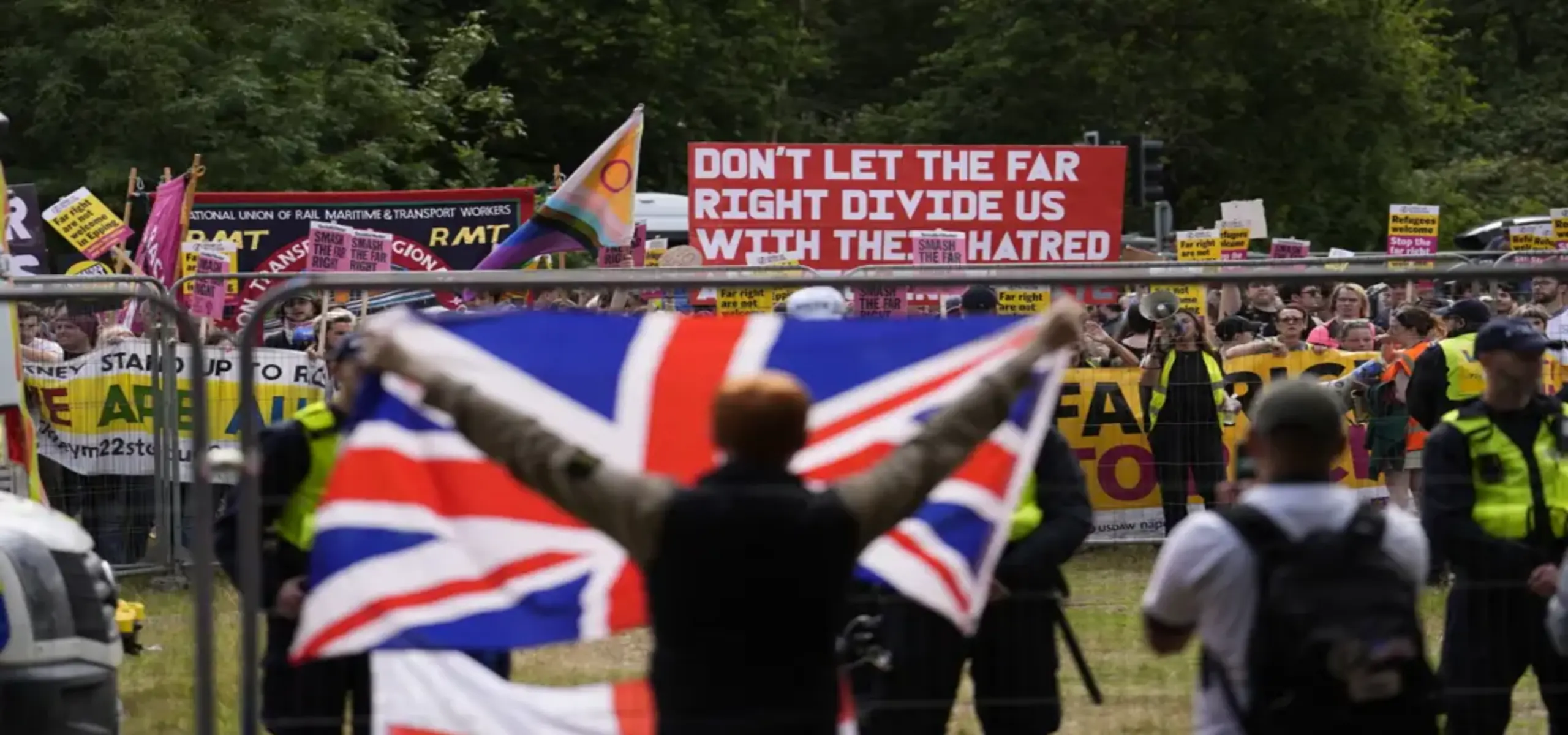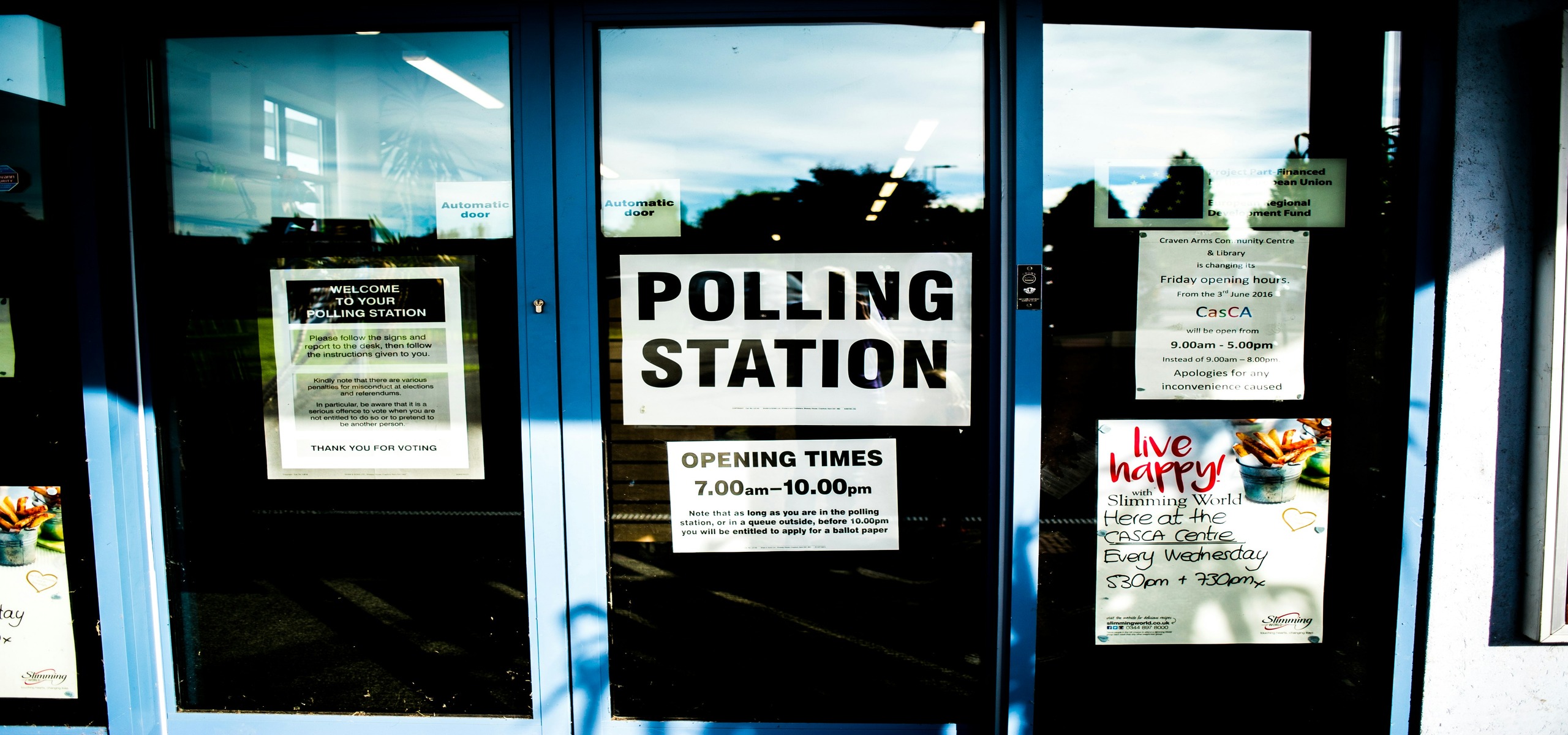Do the right thing: A call to invest in social cohesion after a second summer of riots

As our summers are getting hotter and hotter, like Spike Lee’s film – ‘Do the Right Thing’ – tensions are starting to bubble over. Unrest is erupting in our divided communities.
This time last summer, riots had been spreading across the country following the tragic murder of three young girls in Southport. Although the perpetrator was British-born, his migration background was quickly seized upon by far-right groups and online agitators to stoke racist anti-immigrant violence (including a horrific attempt to burn down a hotel housing asylum seekers in Rotherham).
This summer, we’ve seen similar anti-migrant protests across the country – from Epping, in Essex to Ballymena in Northern Ireland. In both these cases, unrest has risen in response to allegations that individual asylum seekers have sexually assaulted young girls. Isolated acts of male sexual violence have been seized upon to incite protests against migrant populations, framed under the banner of ‘protecting our kids’.
This narrative is powerful – in part – because it draws on long-standing narratives that portray racialised and ‘othered’ men as a threat to local women and children. This rhetoric has deep historical roots. As feminist scholars like Angela Davis and Sara Ahmed have shown, claims of ‘protecting women’ have been used for centuries to justify racial violence, from colonial campaigns to lynch mobs in the American South. In the modern context, we see echoes of this in the rhetoric used by Nigel Farage, Elon Musk and Donald Trump – as they harness public anxieties about crime and sexual violence to justify tougher migration controls.
Indeed, this framing is not incidental. By borrowing the language of feminism, these people position themselves as protectors while their actions do little to defend women’s safety. Indeed, recent data exposed a striking hypocrisy. Two in five of those arrested for the riots last summer, had been previously reported for domestic abuse. It’s clear that these protestors ‘feminist’ motivations are not genuine or authentic. While they justify their actions on the grounds of protecting women, many of them are themselves perpetrators of violence against women. They are in fact the people that women need protection from.
So, why is this framing of so galvanising? Psychology offers some useful insight. The availability heuristic, a well-documented cognitive bias, helps explain how certain stories take hold of the public imagination. When an event is vivid, emotionally charged, and widely reported, it sticks in people’s minds. Further, when we are repeatedly told the same narratives, stories which fit that narrative are easily accepted as we are inclined to see the patterns that confirm what we already primed to fear. Knowing this, it’s important that we remain vigilant to the way long ingrained racialised tropes are used to distort people’s perceptions.
Further, the escalation of these protests can be understood through the lens of the in-group out-group bias; through social psychology that explains why, when people feel threatened, they tend to retreat into their tribe and turn on the so defined ‘out-group’. Here, in the calls to protect “our” kids and send “them” back, we see how quick people are to reiterate preexisting ideas about who belongs and who does not. Further, when we understand how these engrained biases work together, we can better understand why so many are ready to cast the male migrant as the enemy, the dangerous ‘outsider’. Through this lens we can see why so many are ready to demonize huge swathes of the population for the actions of an individual.
Ultimately, these recent riots have exposed high levels of latent anti-migrant sentiment across the country. Indeed, while the government acted swiftly in response to the riots last summer, arresting thousands of people, it’s clear this hasn’t addressed any of the root causes. It’s evident that our communities remain deeply divided. That it takes only a small spark or single event to reignite people’s anger.
So, what can be done?
At one level – it is a matter of regulating the discourse. It is about doing more to limit the misinformation spread by online agitators. More broadly, it’s about being aware of how extreme anti-migrant language is seeping into the mainstream and reinforcing ideas of ‘us’ and ‘them’. We know that words are powerful and when, for example, our leaders make claims that we’re becoming ‘an island of strangers’, they strengthen in-group out-group divisions that these riots are built on.
Additionally, when we talk about discourse, we need to do more to challenge the way women’s rights are being used as a cover to justify anti-immigrant violence. Because no woman feels safer when there are angry mobs of men shouting outside hotels.
Lastly, to bring enduring change, much more needs to be done to build community cohesion. We need to restructure the way that we welcome and integrate newcomers. Labour needs to make good on their promise to stop housing newcomers in hotels, and find a solution to migrant accommodation that facilitates everyday interaction and integration. Clearly, when people are kept in institutional accommodations for long periods, intentionally isolated and made to feel unwelcome, when they’re denied the right to work and left in a state of limbo – nobody benefits.
Our leaders need to do more than arresting and firefighting, because while the dust may have settled, if significant meaningful change is not enacted, if hateful narratives continue and divisions are left to deepen – it’ll only be a matter of waiting for the next spark.

